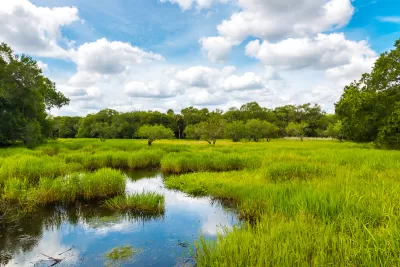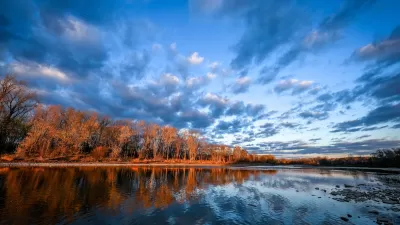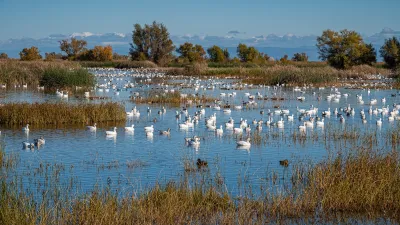A legal scholar suggests mechanisms for closing loopholes that limit the law’s effectiveness.

Writing in The Regulatory Review, Jackson Nichols outlines an argument by law professor Erin Ryan that the federal Clean Water Act (CWA), in its current state, doesn’t do enough to protect and preserve increasingly threatened U.S. waterways.
“In a recent article, Ryan contends that, by addressing quality alone, federal water governance fails to connect the ‘inextricably intertwined’ elements of water quality and quantity.” Ryan notes that “the regulation of water quantity—how much water remains within a regulated waterway—occurs almost entirely through state allocation laws independent of the CWA,” limiting the impact of the federal law.
For Ryan, “The roadblocks hindering the creation of comprehensive national standards are jurisdictional barriers, historical practice, pure practicality, and constitutional limits on federal power.” Thus, the CWA is ‘necessary but not sufficient’ to protect stretched water supplies and preserve bodies of water to protect from pollution.
Ryan recommends several legal tools that can be used to ‘plug the holes’ in the CWA and make it more effective legislation, including the public trust doctrine and the rights of nature movement, which call for the protection of natural resources for the benefit of both humans and nature. “Both speak to concerns “underserved” by conventional environmental law, both protect values underappreciated in cost-benefit analyses, and both embody last resort arguments in court.”
FULL STORY: Plugging Holes in the Clean Water Act

Study: Maui’s Plan to Convert Vacation Rentals to Long-Term Housing Could Cause Nearly $1 Billion Economic Loss
The plan would reduce visitor accommodation by 25,% resulting in 1,900 jobs lost.

North Texas Transit Leaders Tout Benefits of TOD for Growing Region
At a summit focused on transit-oriented development, policymakers discussed how North Texas’ expanded light rail system can serve as a tool for economic growth.

Using Old Oil and Gas Wells for Green Energy Storage
Penn State researchers have found that repurposing abandoned oil and gas wells for geothermal-assisted compressed-air energy storage can boost efficiency, reduce environmental risks, and support clean energy and job transitions.

Santa Barbara Could Build Housing on County Land
County supervisors moved forward a proposal to build workforce housing on two county-owned parcels.

San Mateo Formally Opposes Freeway Project
The city council will send a letter to Caltrans urging the agency to reconsider a plan to expand the 101 through the city of San Mateo.

A Bronx Community Fights to Have its Voice Heard
After organizing and giving input for decades, the community around the Kingsbridge Armory might actually see it redeveloped — and they want to continue to have a say in how it goes.
Urban Design for Planners 1: Software Tools
This six-course series explores essential urban design concepts using open source software and equips planners with the tools they need to participate fully in the urban design process.
Planning for Universal Design
Learn the tools for implementing Universal Design in planning regulations.
Ascent Environmental
Borough of Carlisle
Institute for Housing and Urban Development Studies (IHS)
City of Grandview
Harvard GSD Executive Education
Toledo-Lucas County Plan Commissions
Salt Lake City
NYU Wagner Graduate School of Public Service





























